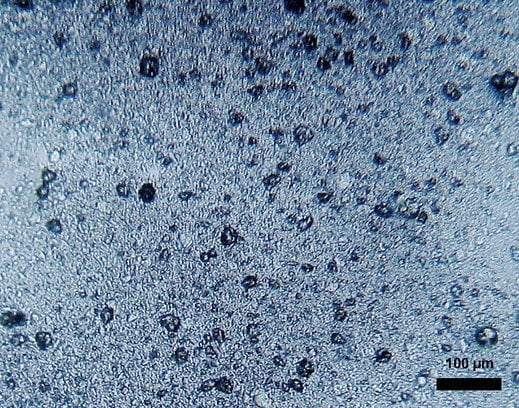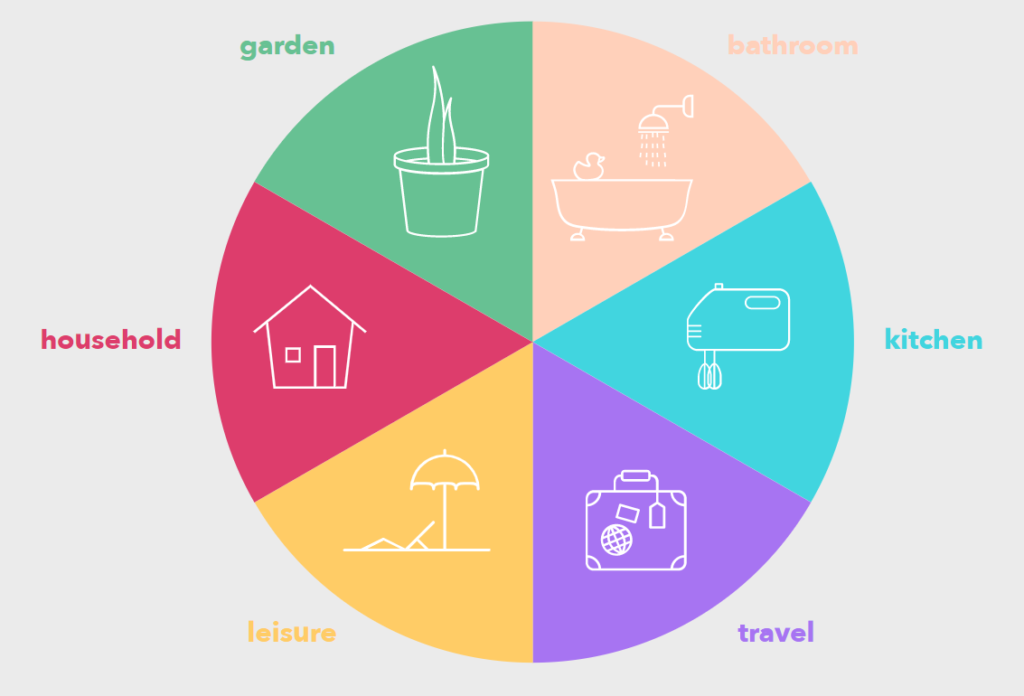The Undeniable Threat Microplastics Pose to Humans
“To Be or Not to Be.”
Like Hamlet contemplating the existential question of all time, we all have a choice in life. In this case, it is choosing whether to use plastics or not. Modern life has evolved to the point where many things become disposable and replaceable, for example, fast fashion or digital devices like mobile phones that go out of fashion in the blink of an eye.
The more we consume, the more we throw out, the more we waste.
By Ana Yong
Further Reading:
- The Plastic Waste Dilemma and China’s National Sword Policy
- Where are Microplastics Found and Where do They Come From?
An Introduction to Microplastics: Types and Lifespans
Microplastics are pollutants. National Geographic states that they come ”from both commercial product development and the breakdown of larger plastics” and are less than five millimeters (0.2 inches) in diameter. There are two types: primary and secondary microplastics.
Primary microplastics are minute particles intended for money-making purposes like cosmetics or microfibers discarded from clothes and other fabrics like fishing nets.
Secondary microplastics are fragments that have broken off from larger plastic products like disposable water bottles. The disintegration is caused by exposure to the elements.
Microplastics can take up to thousands of years to decompose. They appear as colorful plastic specks in the sand on the beach but are usually eaten by marine animals in the sea. They have been found in aquatic organisms like plankton and whales, and in commercial seafood as well as in drinking water.

Credit: Dantor (talk) 20:55, 18 November 2013 (UTC)
Pervasiveness of Microplastics in the Human Body
1. Placenta
An academic paper published in Environment International, volume 146 entitled “Plasticenta: First evidence of microplastics in human placenta” stated that microplastics had been detected in human placentas and in all parts of the placenta: maternal, fetal and amniochorial membranes, thereby, affecting human health and wellbeing.
2. Blood
The Guardian’s article “Microplastics found in human blood for first time” dated 24 March 2022 announced that scientists have found the plastic specks in almost 80% of those tested. The microplastics can get stuck in organs and may cause injury to human cells.
3. Faeces
In another article by The Guardian called “More microplastics in babies’ faeces than in adults’ – study” dated 22 September 2021, stated that infants had 10-20 times higher levels of polyethylene terephthalate (PET) microplastics in their stool than adults.
4. Human Cells
The Guardian had also reported in “Microplastics cause damage to human cells, study shows” dated 8 December 2021 that injury included the loss of cells which happened at levels of microplastics ingested through the normal consumption of food.
National Geographic announced that tests conducted in laboratories had shown that the destruction to human cells involve both allergic reactions and cell mortality.
5. Lungs
Another academic paper published in Science of the Total Environment, volume 831 entitled “Detection of microplastics in human lung tissue using μFTIR spectroscopy” revealed that microplastics were discovered in all areas in the human lungs consisting mostly of Polypropylene and Polyethylene Terephthalate fibres suggesting that the microplastics were inhaled.
How do Microplastics Enter the Body
According to News Medical Life Sciences, microplastics may enter the human body by inhalation, ingestion and dermal absorption as these particles are found in air, water, food and consumer products.
Dermal Absorption “happens when a chemical goes through the skin and travels into the body” like pesticides and organic solvents. The amount of chemicals absorbed into the skin depends on the Stratum Corneum which defends the lower layers of the skin. Protection is two-way which means that it defends against molecules crossing over into and out of the skin.
The ability of the Stratum Corneum to perform its function relies upon:
- Durability of the skin,
- Position on the skin where the molecules are absorbed like thickness of the skin, water content, and skin temperature,
- Physical and chemical properties of the microplastics,
- Degree of concentration of the particles in contact with the skin,
- Length of absorption,
- Amount of skin area absorbing the micro-fragments.

Microplastic fibers identified in the marine environment
Credit: M.Danny25
How do Microplastics Affect Human Health
Though there has still been limited research conducted to study the effects of microplastics on the human body, it has been shown that they create metabolic disturbance, neurotoxicity and carcinogenic outcomes. They can also serve as endocrine disruptors impeding regular hormone function resulting in weight increase.
Specific microplastics like flame retardants may even affect fetal brain growth and hinder conventional brain maturity in children.
In an article entitled “Brain Damage Linked to Common Compound In Everyday Plastic Items” by neurosciencenews.com dated 15 April 2021, it was revealed that two everyday plasticizers BPA and BPS found in water bottles and food packaging affect and damage transmission between neurons in the brain.
BPA is Bisphenol A which has been around since the 1950s and is used to make certain plastics and resins. BPA is used in polycarbonate plastics and epoxy resins. The former is utilized in containers for storing food and beverages while epoxy resins are used to line the inner side of metal items like food cans, bottle tops and water supply lines. BPA contact may also affect the brain and prostate gland of fetuses, infants and children as well as impact children’s behavior. In addition, there may be a connection between BPA and increased blood pressure, Type 2 Diabetes, and Cardiovascular Disease.
BPS is Bisphenol S and is used as a replacement for BPA. However, research has highlighted that BPS may even be more hazardous to human health than BPA. It was found that BPS also causes obesity and is related to metabolic dysfunctions like Gestational Diabetes (diabetes during pregnancy) which BPA was not correlated with.
Four Resources to help Reduce Plastic Use
1. plastichealthcoalition.org
This website has a fun and interactive Plastic Diet Pie to teach users how to minimize plastic use. Click on the various sections of the Pie and consider the tips suggested. The website has additional resources for progressing in your ecological journey after you have completed applying all segments in the Pie which is also downloadable as an application to be used in your mobile phone.

Well-known for organizing and leading the Plastic Health Summit 2021 in Amsterdam with a focus on the interconnectivity of environmental health and human health, the videos of the event are available on the site’s YouTube Channel. Plastic Health Coalition’s next Plastic Health Summit will be held in April 2023 with more details to be released soon.
2. plasticpollutioncoalition.org
This platform has a huge resource library on plastic pollution and solutions. At the time of writing, there were 6 on-going projects catered to reducing the use of plastics in everyday life, for example, those interested in plastic toxicity in lead pipe replacements should click on ‘Filtered Not Bottled’ in the Projects tab to find out more.
Plastic Pollution Coalition is a not-for-profit communications and support group that works with public, private, business and individual parties to create a plastic-free and regenerative world. It was founded in 2009 by artists, activists, scientists, and leaders to educate the masses about plastic pollution, damage and solutions.
3. 5gyres.org
This organization was formed to study and find solutions for plastic pollution, in particular, marine plastics which are floating in the oceans and seas. The research conducted by 5 Gyres has been featured in more than 25 peer-reviewed journals, papers and reports. They have organized 19 exploratory missions to examine 50,000 nautical miles of plastic invasion.
The five gyres which front the name of the group refer to the 5 key subtropical gyres in the North and South Pacific, the North and South Atlantic, and the Indian Ocean. According to the National Ocean Service, a gyre is a “large system of rotating ocean currents” that carry with it a lot of debris including plastic waste.

For a comprehensive list of the published research, click here. If reading research papers is not your cup of tea, you may find interesting videos on the 5 Gyres YouTube Channel. And if you are curious about their 19 expeditions around the world, click here for a series of videos documenting the journeys.
4. National Geographic Kids
As the name suggests, the resources on this site have been specially written for children. The site is divided by countries with educational information catered for specific regions. Although users may access the information according to the 5 countries: United Kingdom, Ireland, South Africa, Australia and New Zealand, some materials are shared across all 5. But if you wish to access a particular country, for example, New Zealand, click here. To cultivate the simple but important habit of reducing plastic use by children, do visit this section. And for a list of ideas on cutting down on plastics, click here.
Measures taken by Countries to Reduce Plastics
National Geographic, in conjunction with the National Geographic Society, has produced an article named “A running list of action on plastic pollution” dated 11 June 2019 providing concise and easy to understanding information relating to actions that various countries are taking to minimize plastic pollution.
According to an article by the Sustainable Ocean Alliance (SOA) entitled “Plastic Free July: How 20 countries are taking action” dated 5 July 2022, twenty nations including China, India and Indonesia have administered strict policies either banning or reducing the use of plastics nationwide:
- China has banned single-use plastic bags and utensils in major cities and single-use straws nationwide since 2021.
- India has banned the production and usage of single-use plastics from July 2022.
- Indonesia has enacted a presidential decree in 2018 to reduce oceanic plastic waste by 2025 while the Ministry of Environment and Forestry has devised a policy to decrease un-recycled plastic trash by 30% in 2030.
In another article called “Countries Pave the Way to End Plastic Pollution” dated 3 March 2022 by the Scientific American revealed that a resolution has been passed by the United Nations during the annual assembly of the United Nations Environment Programme (UNEP) in Nairobi, Kenya which involved 175 countries to end plastic pollution within the next two years.
During these two years, a working group would draw up the framework of a legally binding document that covers how plastic is produced, fabricated and discarded (known as life cycle). Thereafter, the team would deliberate on the techniques to cut plastic pollution worldwide. It would also examine the formation of a funding resource to implement and maintain the objectives of the treaty including the methodology to track progress internationally.
As a follow-up to the above, an article by the World Economic Forum dated 22 September 2022 entitled “How multiple countries are working together to end plastic pollution by 2040” reported that Norway and Rwanda have formed the High Ambition Coalition to End Plastic Pollution which is made up of a group of motivated countries supporting a globally recognized and legally binding agreement to stop plastic pollution by 2040.
Last Word
It is indeed encouraging to know that countries all over the world have recognized that plastics (in its various forms) including microplastics have left an indelible impact on the future of humans and have launched a series of battles against the seemingly overwhelming presence of plastic waste all over the world.
As an individual, our actions may effect little change, but, united, our efforts may surmount the plastics dilemma to create a better world for everyone.